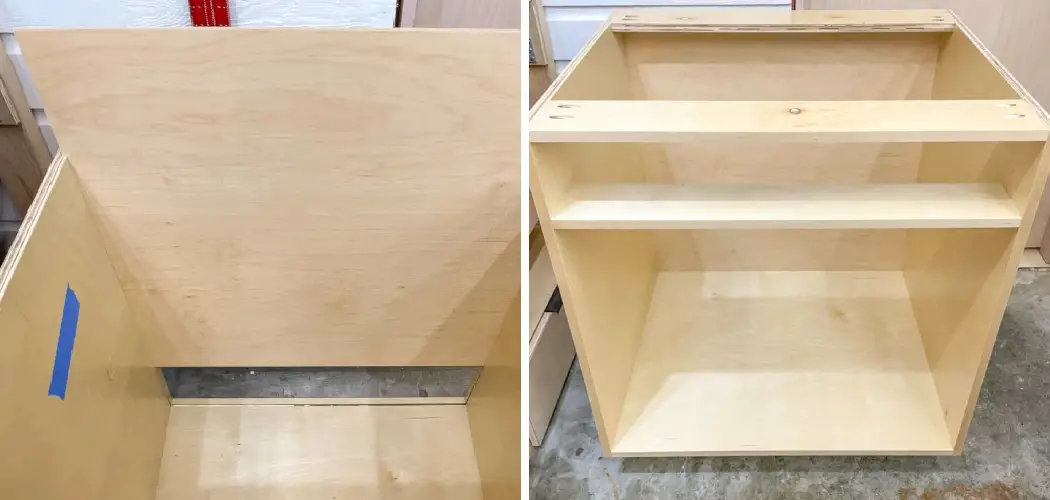Giving your cabinets a fresh new look is as easy as updating the back panel. Attaching a cabinet back panel is a simple DIY project that can be completed in just a few steps. So, if you’re looking for a way to update your cabinets on a budget, read on for instructions on how to attach a cabinet back panel.
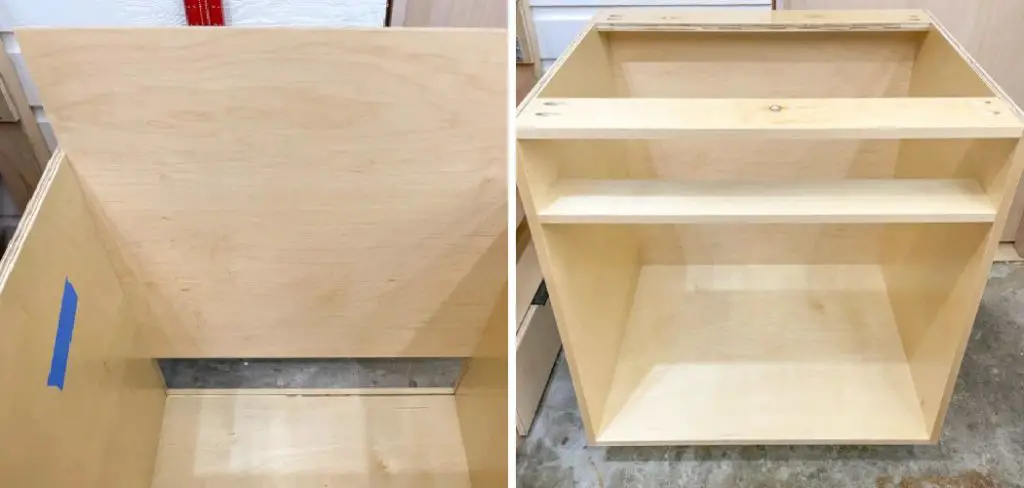
Cabinet back panel installation may seem like a daunting task, but with the right tools and instructions, it can be done in no time. In this blog post, we will provide you with everything you need to know about how to attach cabinet back panel including what tools you will need and how to do it. So read on for tips and tricks on how to install your cabinet back panel like a pro!
What is a Cabinet Back Panel?
A cabinet back panel is a thin piece of material that covers the back of your cabinet. It provides structural support for the cabinet and also gives it a finished look. Cabinet back panels can be made from various materials such as plywood, fiberboard, or even decorative panels like beadboard. They can also come pre-cut to fit your cabinet size or you can cut them yourself.
You may be wondering why the back panel is necessary if it’s not a visible part of the cabinet. Well, aside from providing support and stability, attaching a back panel can also help to keep dust and debris from getting inside your cabinets. It also helps to prevent items from falling out through the back, making for a more secure storage space.
Why is Attaching a Cabinet Back Panel a Great Idea?
There are reasons why attaching cabinet back panels is such a great idea. Such as:
1. Provide Additional Stability
The back panel helps to provide additional stability to the cabinet. This is especially important if the cabinet is going to be located in a high-traffic area or subject to vibration.
2. Prevent Warping
By attaching a back panel to the cabinet, you can help prevent the door and drawer fronts from warping over time. So, it can be a good idea to take this extra step, particularly if you’re using less expensive materials that are more prone to warping.
3. Create a More Finished Look
Another advantage of attaching a back panel is that it creates a more finished look for the cabinet. This is especially important if the cabinet will be visible from all sides, such as on a kitchen island.
4. Make Cabinet Installation Easier
If you’re planning on installing the cabinet yourself, attaching the back panel can make the job a lot easier. It’s one less thing you have to worry about when putting everything together.
5. Improve Airflow
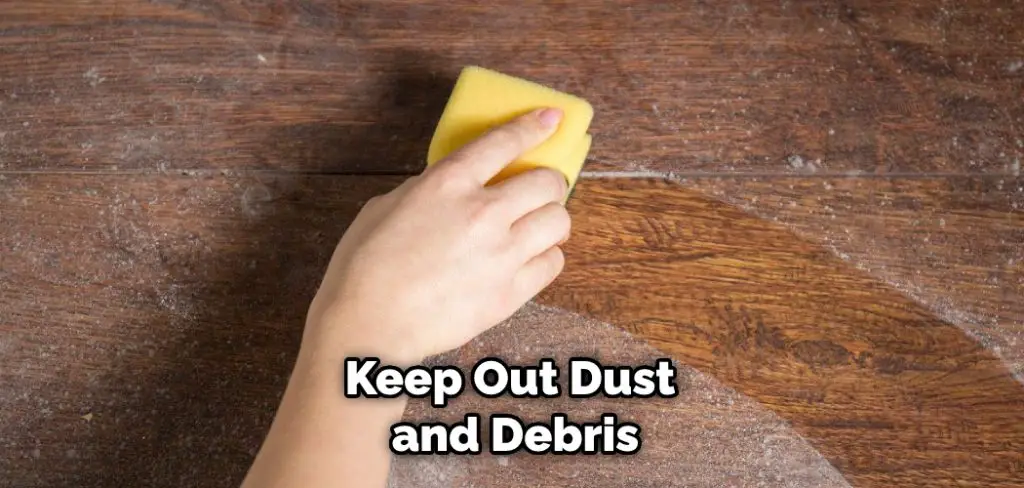
In some cases, attaching a back panel can also improve airflow to the cabinet. This is particularly important if the cabinet will be used for storing electronics or other heat-generating items.
6. Keep Out Dust and Debris
Finally, attaching a back panel can help to keep out dust and debris when the cabinet is not in use. This is especially important if the cabinet will be located in a garage or other dusty area.
Things You Will Need to Attach Cabinet Back Panel
Putty Knife:
You will need this tool to remove any old adhesive or caulk from the back of your cabinet.
Screwdriver:
A screwdriver will be needed for removing and reattaching cabinet hardware.
Measuring Tape:
When attaching a back panel, it’s important to measure precisely. A measuring tape can help ensure perfect alignment.
Straight Edge/Ruler:
A straight edge or ruler will also come in handy for measuring and marking the back panel for cutting.
Jigsaw (optional):
If you need to cut your back panel to fit, a jigsaw can be a useful tool.
Back Panel Material:
As mentioned earlier, there are various materials that can be used for cabinet back panels. Choose one that fits your budget and aesthetic preferences.
Adhesive:
You will need an adhesive that is strong and suitable for your chosen back panel material.
Caulk (optional):
If you want to seal the edges of the back panel, caulk can be used.
How to Attach Cabinet Back Panel in 9 Steps
Step 1: Start by Measuring the Back Panel
The first step is to measure the back panel. You’ll need to know the dimensions of the panel in order to properly attach it to the cabinet. Make sure to measure the width and height of the back panel as well as any cutouts for outlets or plumbing. Otherwise, you may end up with a back panel that doesn’t fit properly. It’s always a good idea to measure twice to ensure accuracy.
Step 2: Cut the Panel to Size
Once you have the measurements, you’ll need to cut the panel to size. If you’re not comfortable doing this yourself, you can always have a professional do it for you. If you do decide to cut it yourself, make sure to use a straight edge or ruler for precise measurements and a jigsaw for cutting. But be careful not to cut too much, as you can always trim later if needed. You can also opt for pre-cut panels if you’re not comfortable with cutting.
Step 3: Attach the Panel to the Cabinet
Now, it’s time to attach the panel to the cabinet. You’ll need to use screws or nails to do this. Be sure to predrill holes if you’re using screws so that they go in easily. Make sure the panel is attached securely. If you’re using adhesive, apply a generous amount to the back of the panel before attaching it to the cabinet. The adhesive should be strong enough to hold the panel in place. The panel should fit snugly against the back of the cabinet.
Step 4: Add Trim around the Panel
If you want, you can add trim around the panel to give it a more finished look. This is entirely optional, but it can be a nice touch. Carefully measure and use a miter saw to cut the trim to size before attaching it. You can use adhesive or small nails to attach the trim to the cabinet. But make sure to wipe off any excess adhesive before it dries. The trim will also help secure the back panel. But if you’re using trim, it’s important to make sure the panel is attached securely first.
Step 5: Hang Doors and Drawers
Once the back panel is in place, you can hang doors and drawers. This part is entirely up to you and how you want your cabinet to look. So, if you want to add doors or drawers, now is the time. You can also add any hardware at this point, such as knobs or handles. It is often easier to add these items before the cabinet is installed.
Step 6: Install the Hardware
If you haven’t already, now is the time to install any hardware that you’ll be using on the cabinet. This includes things like knobs, pulls, and hinges. You have to be careful with this step, making sure that everything is lined up correctly. A slight misalignment can cause issues with the doors and drawers closing properly. But once everything is installed correctly, you can move on to the next step.
Step 7: Finish Up
The next step is to simply finish up. This means adding any final touches to the cabinet, such as paint or stain. Once you’re done, you’ll have a beautiful and functional cabinet that will look great in your home. Be sure to clean up any mess and dispose of any leftover materials properly. Otherwise, you can sit back and enjoy your newly attached cabinet back panel. You’ve successfully completed the job!
Step 8: Maintenance Tips
To keep your cabinet looking its best, it’s important to properly maintain it. This means regularly cleaning and dusting the back panel as well as the rest of the cabinet. If you’re using a wood back panel, be sure to polish it every so often to maintain its shine. You should also check for any loose screws or hardware and tighten them if needed. With proper maintenance, your cabinet will continue to look great for years to come.
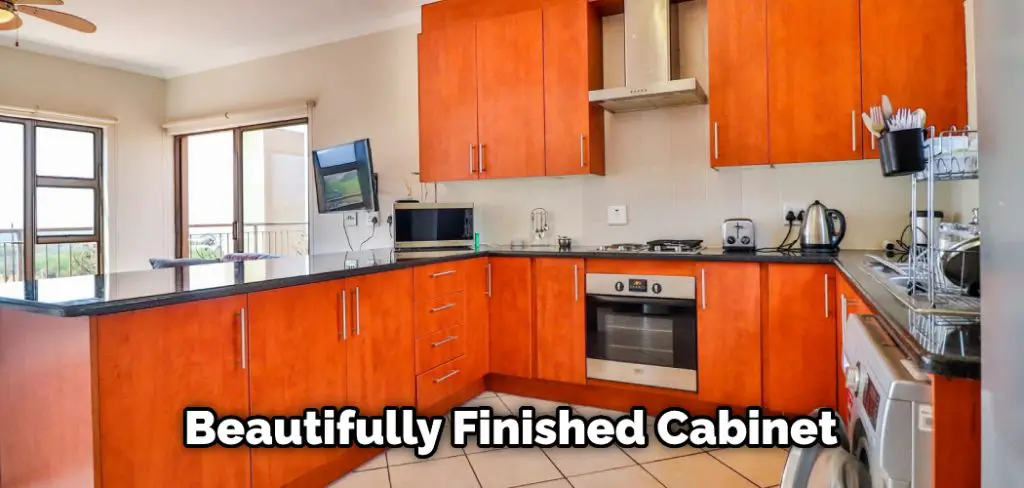
Step 9: Enjoy Your Newly Attached Cabinet Back Panel
Congratulations! You’ve successfully attached a back panel to your cabinet. Not only does it improve the overall look of the cabinet, but it also adds functionality and protection. Now, you can sit back and enjoy your handy work without having to worry about dust or debris getting inside or heat buildup damaging any electronics stored inside.
Following these steps on how to attach the cabinet back panel and using the proper tools and materials will ensure a successful attachment of your cabinet back panel. Remember to measure accurately, use an appropriate adhesive, and properly maintain your cabinet for long-lasting results. With these tips in mind, you can confidently tackle any future cabinet projects with ease. Happy DIY-ing!
Things You Have to Keep in Mind When Attaching Cabinet Back Panel
These are the things that you have to keep in mind when attaching the cabinet back panel. Make sure that you follow these tips so that you will be able to do it properly.
1. Make Sure That the Panel is Cut to Size:
The back panel of the cabinets usually comes in standard sizes. However, you should still make sure that it is cut to size before attaching it. You can use a tape measure to take measurements, or you can ask the store where you bought the panel for the measurement.
2. Choose the Right Adhesive
There are different adhesives that you can use to attach the back panel. However, you should make sure that you choose the right one so that it will not damage the panel or the cabinets.
3. Apply the Adhesive Properly
Once you have chosen the right adhesive, you should apply it properly. Make sure that you follow the instructions on how to apply it. Otherwise, you might not be able to attach the back panel properly.
4. Wait for the Adhesive to Dry
After you have applied the adhesive, you should wait for it to dry. This usually takes a few hours. Once it is dry, you can then proceed to attach the back panel.
5. Pre-drill Holes Into the Panel:
Before attaching the panel, you should pre-drill holes into it. This will make it easier for you to attach the panel.
5. Use Screws to Attach the Panel
Once the holes are pre-drilled, you can then use screws to attach the panel. Make sure that you use the right side of the screw so that it will not damage the panel.
6. Tighten the Screws Properly
After attaching the panel, you should then tighten the screws properly. This will make sure that the panel is securely attached to the cabinets.
7. Trim the Excess Panel
Once you have attached the panel, you should then trim the excess panel. You can use a saw to do this. Be careful not to damage the cabinets when trimming the panel.
8. Attach the Molding
After trimming the excess panel, you should then attach the molding. This will give the cabinets a finished look. Make sure that you choose the right type of molding so that it will not damage the cabinets.
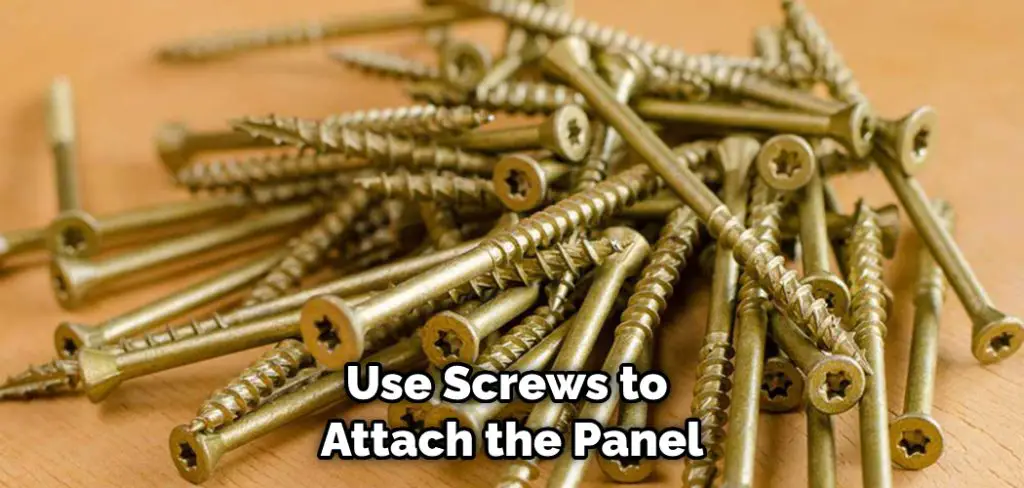
9. Apply Caulk
After attaching the molding, you should then apply the caulk. This will help to seal the joint between the panel and the cabinets. Make sure that you use the right type of caulk so that it will not damage the cabinets.
Once you have followed these tips and steps, you should now have a perfectly attached cabinet back panel that will not only enhance the look of your cabinets but also add functionality and protection. Be sure to properly maintain your cabinets for long-lasting results. Happy DIY-ing!
You Can Check It Out to Cover Underside of Cabinets
FAQ
How Thick Should Cabinet Backs Be?
The backs of cabinets should be at least 1/2-inch thick, but 3/4-inch is even better. This will help to prevent the cabinet from racking and provide a more solid foundation for attaching countertops and hardware. You can also add additional support with corner blocks or braces if needed. However, it is important to follow the manufacturer’s recommendations for your specific cabinet model.
Can You Use Glue to Attach Cabinet Backs?
Yes, you can use adhesive or construction glue to attach cabinet backs. Just make sure to choose a strong adhesive and follow the instructions carefully for best results. If using glue, clamps may be necessary to hold the panel in place while the glue dries. But keep in mind that using screws or nails may provide a sturdier and more secure attachment for the back panel.
What Type of Material Should Cabinet Backs Be Made From?
Cabinet backs can be made from a variety of materials, but plywood is the most common. It’s important to choose plywood that is durable and easy to clean, such as birch or maple. MDF (medium-density fiberboard) is another popular option, but it may not be as strong or durable as plywood. Avoid using particle board for cabinet backs, as it is less sturdy and prone to damage from moisture and humidity.
How Do I Attach Cabinet Backs?
There are a few different ways to attach cabinet backs, but the most common method is to use screws. Simply drill pilot holes through the back of the cabinet and into the wall studs. Then, use a screwdriver or power drill to secure the screws in place. Be sure to use screws that are long enough to penetrate through the thickness of the back panel and into the studs for a secure hold. You can also use adhesive, but it’s important to choose the right kind for your specific cabinet and wall material.
Can I Install Cabinets Without a Back Panel?
It is possible to install cabinets without a back panel, but it is not recommended. The back panel helps to stabilize the cabinet and keep it square, as well as providing a surface for attaching hardware and countertops. Without a back panel, the cabinet may be less stable and may not hold up to heavy use.
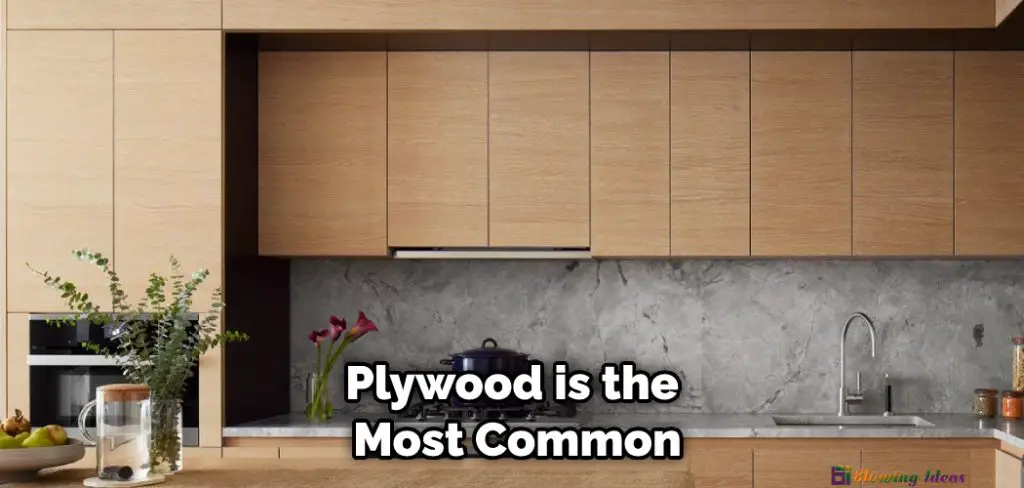
Conclusion
Now that you know how to attach cabinet back panel be sure to practice before starting your project. With a little bit of practice, attaching a back panel will be a breeze.
Installing a cabinet back panel is not as difficult as it may seem. With the right materials and a little bit of patience, you can easily attach a back panel to your cabinets. Just be sure to measure twice and cut once, and you’ll have lovely new panels in no time!
You Can Check It Out To Install Drawer Slides on Face Frame Cabinets
You Can Check It Out To Find Matching Cabinets
You Can Check It Out to Install Magnetic Cabinet Catch

